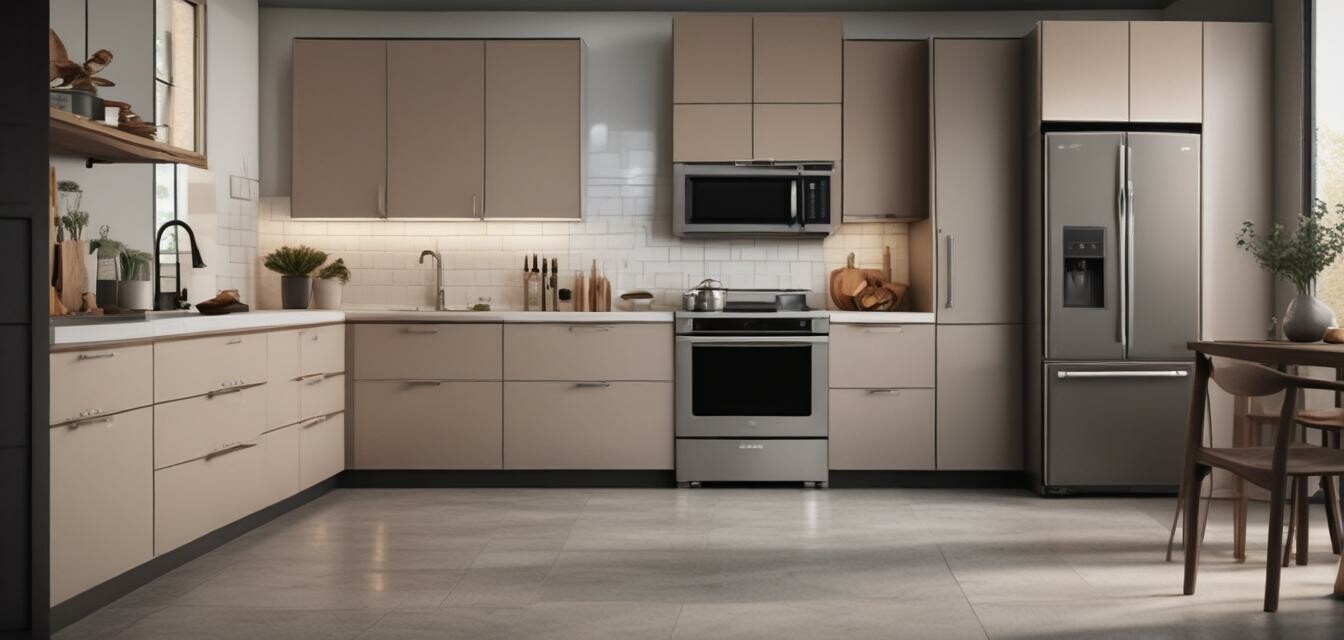
Trends in Sustainable Appliance Manufacturing in 2025
Key Takeaways
- The sustainable appliance market is rapidly evolving in response to environmental concerns.
- Innovations in materials are focused on recyclability and reduced carbon footprints.
- Smart technology is taking center stage, driving energy efficiency improvements.
- Consumer demand for sustainability is reshaping manufacturing processes.
The manufacturing of appliances is undergoing significant transformation as we move towards 2025. As consumers become more conscious of their environmental impact, sustainable practices are no longer just an option—they are a necessity. This article explores the key trends in sustainable appliance manufacturing, from the materials used to the innovative processes that promote energy efficiency. Let’s delve into how manufacturers are making strides towards a greener future.
1. Material Innovations
Manufacturers are exploring a variety of materials that not only perform well but also minimize environmental impact. The following table outlines some of the key materials being utilized in sustainable appliances:
| Material | Description | Benefits |
|---|---|---|
| Recycled metal | Utilizing metals reclaimed from old appliances. | Reduces mining impact and carbon footprint. |
| Bamboo | A rapidly renewable resource, used in some appliance exteriors. | Lightweight and strong, with minimal impact on the environment. |
| Bioplastics | Made from renewable biomass sources. | Biodegradable and reduces reliance on fossil fuels. |
2. Energy Efficiency Improvements
One major trend expected is the focus on energy-efficient technologies. Manufacturers are incorporating systems that adjust energy consumption based on use. This includes smart appliances that monitor and optimize energy usage:
- Smart thermostats that learn user habits and adjust heating and cooling accordingly.
- Washers and dryers capable of optimizing water and electricity usage based on load size.
- Energy monitoring apps that help users track and reduce their energy use.
Lifecycle Considerations
As part of the sustainability narrative, the entire lifecycle of appliances is being addressed. Manufacturers are prioritizing lifecycle assessments (LCAs) to evaluate environmental impact from production to disposal. Key lifecycle stages include:
- Raw material extraction: Focusing on sustainably sourced materials.
- Manufacturing: Implementing energy-efficient processes.
- Distribution: Reducing carbon footprints through optimized logistics.
- End-of-life recycling: Designing products for easier disassembly and recyclability.
3. Consumer Preferences and Influence
The demand for sustainable appliances is being heavily influenced by consumer preferences. Here are some trends reflecting this shift:
| Consumer Demand | Action by Manufacturers |
|---|---|
| Increased awareness of energy conservation | Development of more energy-efficient products. |
| Desire for eco-friendly materials | Investments in sustainable manufacturing processes. |
| Interest in smart technology | Integration of IoT into appliance design. |
4. Regulatory Changes and Sustainability Goals
Legislation around sustainability is beginning to shape the landscape of appliance manufacturing. Several governments worldwide are introducing stricter energy efficiency regulations and carbon reduction targets:
- Laws encouraging the use of recyclable materials.
- Incentives for companies that invest in sustainable technologies.
- Standards that demand higher energy efficiency ratings for appliances.
Conclusion
The state of sustainable appliance manufacturing in 2025 is dynamic and increasingly important. Innovations in materials and processes, combined with a clear focus on energy efficiency and lifecycle considerations, are key drivers in this evolution. As consumers become more environmentally conscious, their preferences will shape how manufacturers operate, pushing the envelope on what it means to be sustainably efficient.
Tips for Choosing Sustainable Appliances
- Look for Energy Star ratings to ensure energy efficiency.
- Research brands committed to sustainable manufacturing practices.
- Consider the lifespan and recyclability of the appliance.
- Choose appliances with smart technology that conserves energy.
Pros
- Helps reduce your carbon footprint.
- Can lead to long-term savings on energy bills.
- Supports manufacturers who prioritize sustainability.
Cons
- Initial costs may be higher than traditional appliances.
- Availability of sustainable options may vary by location.
To dive deeper into the benefits of energy-efficient appliances, check out our Tips and How-to Articles.
Stay updated with the latest in the industry by visiting our News and Trends category for more insights on sustainable practices.
For anyone considering an upgrade, our Air Conditioners and Refrigerators sections provide excellent options that meld efficiency with modern design.
We recommend assessing Washing Machines for their water efficiency as well.
